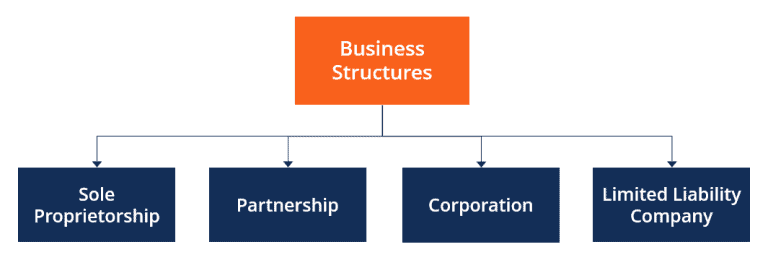Did you know partnership agreement clauses clarify responsibilities and rules guiding business operations? It contains the terms and conditions that set expectations for every participant.
Adding these clauses to your contract helps determine boundaries when the business dissolves. You can protect your ideas by adding the non-compete conditions in the documentation.
Do you seek in-depth information about in-depth information about partnership agreement clauses? We’ll discuss everything you should know about the conditions. Let’s get started.
What is a partnership agreement?
This agreement is a legal, internal business contract. It defines specific business practices for participants in a company.
This well-drafted document outlines the day-to-day operations of an organization. It can also resolve disputes among partners.
A partnership agreement often contains terms and conditions governing cooperation. It defines the rules for business responsibilities, investments, ownership, management, profits, and losses.
This agreement sets clear boundaries and expectations. It also has different names depending on the industry and state. Articles of partnership or partnership contract are a few identities in other jurisdictions.
Standard clauses in partnership agreements
The best partnership agreement clauses includes the following:
- The partnership name
- The goal of the business and partnership
- Business operations, whether a corporation or an LLC
- Name and addresses of every partner in the company
- Strategies to follow when making decisions and how to hire employees
- Responsibilities of every partner associated with the organization
- The contribution of each partner to the business
- Profit-sharing formula, including how and when to pay participants
- Payment percentage for partners
- Vacation policies and hours of operation
- Specific addresses and states where the partnership will operate
- Number of years for the partnership
- Methods to determine debts and partners’ liabilities
- Ways to amend the agreement
- How to add new partners
- The state laws guiding every partner in the business
- Whether every member should use mediation or arbitration before filing any lawsuit
Additional clauses to improve your partnership agreement
Buyout and dissolution, non-compete, and non-disclosure are clauses to include in this agreement. Insurance type and rules for hiring employees are other crucial points to consider. Let’s dig into the details:
Buyout and dissolution clauses
A buyout clause, also known as a release clause, imposes an obligation on another company. It’s for businesses wishing to acquire the services of an organization. It explains what an organization should do with its assets if the LLC business partnership dissolves.
Add these documents to your partnership agreement. They protect you in case of any dissolution or transfer of assets when the relationship ends. This buyout clause should include the following:
- Events that trigger the buyout, such as retirement, divorce, or death
- Clause to explore further alternatives if the buyout is not necessary
- Who can purchase partner stakes, and if it allows non-partners
- Methods of calculating payment or percentage for outgoing partners
- Include methods to follow when partners can’t agree upon a buyout. Include dissolution steps and ways to split debts and assets.
A non-compete clause
This clause is essential in partnership contracts, especially after dissolving a business. It prevents your former partner from starting a competing business nearby.
Not all states accept non-compete clauses, as they’re often overly restrictive. Most courts don’t uphold the contract, so it’s best to check your state law for business to avoid legal liabilities.
Add it into your partnership agreement if your jurisdiction allows it. It might protect your business in the future.
Check for the limits associated with the clause scope. They’re often within a year or two in a geographic area. Lay out rules such as no competing business within 5 to 20 miles. Include fines and penalties for violators.
Partnership hiring potential employees’ clause
Consider including a provision about the potential employees’ interview process. Discuss how partners should select them in your agreement. Provide documentation determining vendor selection and hiring people into the organization.
Accountants, attorneys, marketers, secretaries, and suppliers are a few positions. It’s best to include information about the firing process and ways to relieve staff of their duties.
A non-disclosure clause
Another essential clause to add to your partnership agreement is non-disclosure. It’s a legally binding contract establishing a confidential relationship between business partners. It prevents partners from revealing company secrets to others.
This clause should specify everything that’s confidential and what isn’t. It also includes the non-disclosure duration.
Most contracts last two to five years; partners can take legal action if anyone violates them. You can also sue for an injunction preventing them from further revealing information.
Partnership insurance policy clause
Include a provision for potential employees’ interview process. The agreement should discuss partner selection. Provide documentation about funding options, choosing vendors and hiring people into the organization.
Accountants, attorneys, marketers, secretaries, and suppliers are a few positions for profiling.
The board could partner with the company providing insurance for the company employees. It’s best to include information about the firing process and ways to relieve staff of their duties.
Key takeaways
Walk the partnership agreement clauses process with a certified accountant and professional lawyer. Not knowing the condition requirements could lead to fines or penalties.
Filing the appropriate paperwork is best to avoid unnecessary drama. Avoid unnecessary mistakes when writing partner names, including essential information regarding the business.
The agreement should include buyout and dissolution clauses for future reference. Non-disclosure and insurance policy conditions are other areas of concentration.








